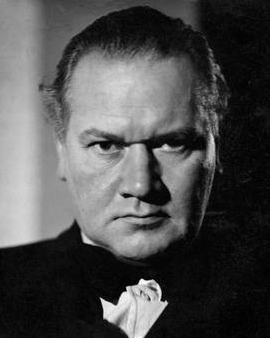Christopher Richard Wynne Nevinson is one of the most famous artists of World War I, as well as a landscape painter, etcher and lithographer. C.R.W. Nevinson was inspired at art school by works of the Welsh etcher Augustus Edwin John and then attended the art school of University College London, where he met contemporaries such as the portrait artist Mark Gertler, engraver Adrian Allinson and the painter and decorative artist Dora Carrington. Nevinson was also interested in early Renaissance art at this time. Nevinson did not hear any positive words from the famous art professor Henry Tonks, which led to a lifelong enmity between the two. For Nevinson he went on to Paris to the prestigious Académie Julian, where he met Pablo Picasso and Vladimir Lenin, shared a studio with the great Italian painter and sculptor Amedeo Modigliani and also met the Italian Futurists Filippo Tommaso Marinetti and Gino Severini. With Marinetti he also wrote and published manifestos for an English Futurism.
When the First World War broke out, Nevinson worked as a volunteer and later as an ambulance driver for the Red Cross and cared for wounded French soldiers. His works "The Doctor" and "La Patrie" are reminiscent of that time. At the London Group Exhibition in 1915 he participated with four works of art, his futuristic painting "Returning to the Trenches" was highly praised. In the same year he also married Kathleen Knowlman. His war and hospital experiences led Nevinson to exhibit "La Mitrailleuse" at the Allied Artists Association in 1916 and to paint pictures like "A Dove". The latter shows a child killed by a German bomb known as "Taube". A year later he was made an official war painter by a British war agency, he visited the Western Front, among other places. Back in England he wrote numerous lithographs about aircraft construction and presented his war paintings (also in New York), which he mainly painted in brown and dark green. Nevinson was also known for his exaggerations, as well as his simultaneously depressive and spirited manner - one critic even defined him as one of the most hated British artists. Even his memoirs are described as partly inaccurate.
During the Second World War Nevinson worked for the Royal Air Force, took pictures of the air war, one of which was given to Winston Churchill as a gift and is still hanging in Downing Street. After a stroke his right hand was paralyzed and he taught himself to paint with his left. In the year of his death he was still exhibiting at the Royal Academy, but he died a few months later.
×





.jpg)
.jpg)
.jpg)
.jpg)
.jpg)
.jpg)
.jpg)
.jpg)
.jpg)
.jpg)
.jpg)
.jpg)
.jpg)
.jpg)
.jpg)
.jpg)
.jpg)
.jpg)
.jpg)
.jpg)
.jpg)
.jpg)
_-_(MeisterDrucke-582537).jpg)
_-_(MeisterDrucke-582537).jpg)
.jpg)
.jpg)
.jpg)
.jpg)
.jpg)
.jpg)
_-_(MeisterDrucke-586962).jpg)
_-_(MeisterDrucke-586962).jpg)
.jpg)
.jpg)
.jpg)
.jpg)
.jpg)
.jpg)
.jpg)
.jpg)
.jpg)
.jpg)
.jpg)
.jpg)
.jpg)
.jpg)
.jpg)
.jpg)
.jpg)
.jpg)
.jpg)
.jpg)
.jpg)
.jpg)
.jpg)
.jpg)
.jpg)
.jpg)
.jpg)
.jpg)
.jpg)
.jpg)
.jpg)
.jpg)
.jpg)
.jpg)
.jpg)
.jpg)
_-_(MeisterDrucke-314894).jpg)
_-_(MeisterDrucke-314894).jpg)
.jpg)
.jpg)
.jpg)
.jpg)
.jpg)
.jpg)
.jpg)
.jpg)
.jpg)
.jpg)
.jpg)
.jpg)
.jpg)
.jpg)
.jpg)
.jpg)
.jpg)
.jpg)
.jpg)
.jpg)
.jpg)
.jpg)
.jpg)
.jpg)
.jpg)
.jpg)
.jpg)
.jpg)
.jpg)
.jpg)
.jpg)
.jpg)
_-_(MeisterDrucke-310258).jpg)
_-_(MeisterDrucke-310258).jpg)
.jpg)
.jpg)
.jpg)
.jpg)
.jpg)
.jpg)
.jpg)
.jpg)
.jpg)
.jpg)
.jpg)
.jpg)
.jpg)
.jpg)
.jpg)
.jpg)
.jpg)
.jpg)
.jpg)
.jpg)
.jpg)
.jpg)
.jpg)
.jpg)
.jpg)
.jpg)
.jpg)
.jpg)
.jpg)
.jpg)
.jpg)
.jpg)
_-_(MeisterDrucke-1426926).jpg)
_-_(MeisterDrucke-1426926).jpg)
.jpg)
.jpg)
 - (MeisterDrucke-368711).jpg)
 - (MeisterDrucke-368711).jpg)
_(Oil_on_board)_-_(MeisterDrucke-1321634).jpg)
_(Oil_on_board)_-_(MeisterDrucke-1321634).jpg)
_-_(MeisterDrucke-1100318).jpg)
_-_(MeisterDrucke-1100318).jpg)
.jpg)
.jpg)
.jpg)
.jpg)
.jpg)
.jpg)
.jpg)
.jpg)
.jpg)
.jpg)
_-_(MeisterDrucke-1479763).jpg)
_-_(MeisterDrucke-1479763).jpg)
_-_(MeisterDrucke-697255).jpg)
_-_(MeisterDrucke-697255).jpg)
.jpg)
.jpg)
.jpg)
.jpg)
_-_(MeisterDrucke-1118222).jpg)
_-_(MeisterDrucke-1118222).jpg)
.jpg)
.jpg)
.jpg)
.jpg)
 - (MeisterDrucke-232281).jpg)
 - (MeisterDrucke-232281).jpg)
_-_(MeisterDrucke-1100005).jpg)
_-_(MeisterDrucke-1100005).jpg)
.jpg)
.jpg)
.jpg)
.jpg)
.jpg)
.jpg)
_-_(MeisterDrucke-658819).jpg)
_-_(MeisterDrucke-658819).jpg)
.jpg)
.jpg)
.jpg)
.jpg)
_1927_(etching_and_drypoint)_-_(MeisterDrucke-570037).jpg)
_1927_(etching_and_drypoint)_-_(MeisterDrucke-570037).jpg)
 - (MeisterDrucke-238756).jpg)
 - (MeisterDrucke-238756).jpg)
.jpg)
.jpg)
.jpg)
.jpg)
_-_(MeisterDrucke-905589).jpg)
_-_(MeisterDrucke-905589).jpg)
_-_(MeisterDrucke-1479761).jpg)
_-_(MeisterDrucke-1479761).jpg)
_-_(MeisterDrucke-588027).jpg)
_-_(MeisterDrucke-588027).jpg)






